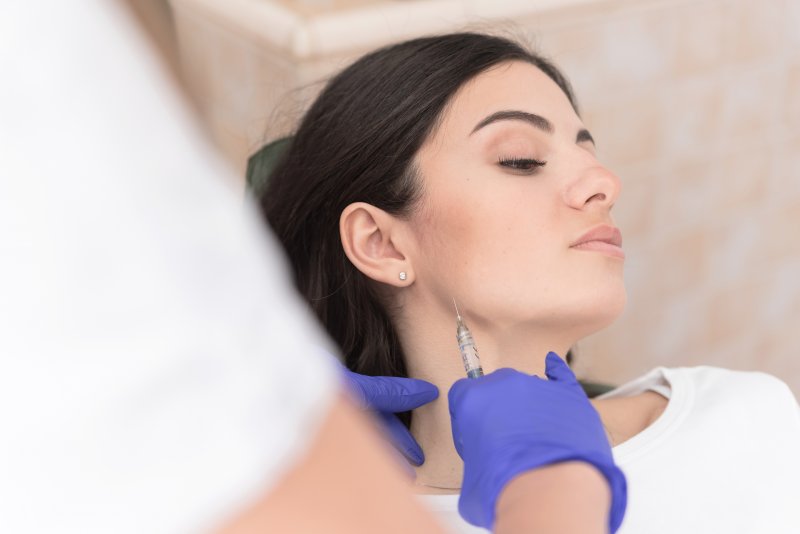
When the TMJ (temporomandibular joint) that connects the jawbone to the skull becomes injured or overworked, it results in a TMJ disorder that can cause constant jaw pain and headaches. Luckily, your dentist has multiple treatments that can potentially help you find relief. Oftentimes, they might recommend adjusting the teeth or wearing an oral appliance – but in other cases, they may suggest a BOTOX treatment! What exactly does BOTOX have to do with TMJ therapy? Read on to find out.
What Exactly is a TMJ Disorder?
The term TMJ disorder can refer to a wide range of problems with your jaw joints and the muscles that help control them. It’s not always clear what causes a TMJ disorder, but it may happen after an injury to the jaw, repeated grinding or clenching of the teeth, or the development of arthritis. In addition to jaw pain, common symptoms include headaches, lockjaw, and a clicking sound whenever you move your mouth.
How Does BOTOX Help Treat a TMJ Disorder?
While BOTOX is best known for smoothing out wrinkles and fine lines, its properties also make it an effective way to reduce TMJ-related pain. The treatment involves a small injection of botulinum toxin that blocks the nerve signals responsible for muscle contraction. When BOTOX is injected into the muscles that help control jaw movements, it causes them to relax and prevents them from making the (usually unconscious) motions that can contribute to TMJ disorder.
Thanks to BOTOX, your dentist can help relieve the pressure on your jaw joints, giving them a chance to rest and recover. The effects of the injection usually last for about three to six months, and you can have follow-up treatments done in order to keep enjoying the benefits. During this time, you can pursue other treatments to address the underlying cause of your TMJ disorder and potentially stop the problem for good.
What Should You Expect from the Treatment?
The procedure can usually be completed within 10 to 30 minutes, although it largely depends on how many injections you need. There’s very little discomfort involved, but if you’re worried about getting an injection, your dentist may use nitrous oxide to keep you comfortable and relaxed.
BOTOX is a noninvasive, nonsurgical treatment. You’ll be able to return to your normal activities right away following the procedure. That said, you will need to avoid rubbing or massaging the injection site, and you should plan on limiting physical activity for a while.
Have you had enough of living with constant jaw pain and frequent headaches? Talk to your dentist today to see if BOTOX – or another type of treatment – might be the solution that you’ve been looking for.
About the Practice
At Jupiter Implant and Cosmetic Dentistry, our skilled, highly trained dentists offer high-quality care personalized for every patient. We’re proud to offer BOTOX, oral appliances, and occlusal adjustments as possible treatments for TMJ disorder. To schedule a consultation and learn more about our services, visit our website or call (561) 559-8942.
